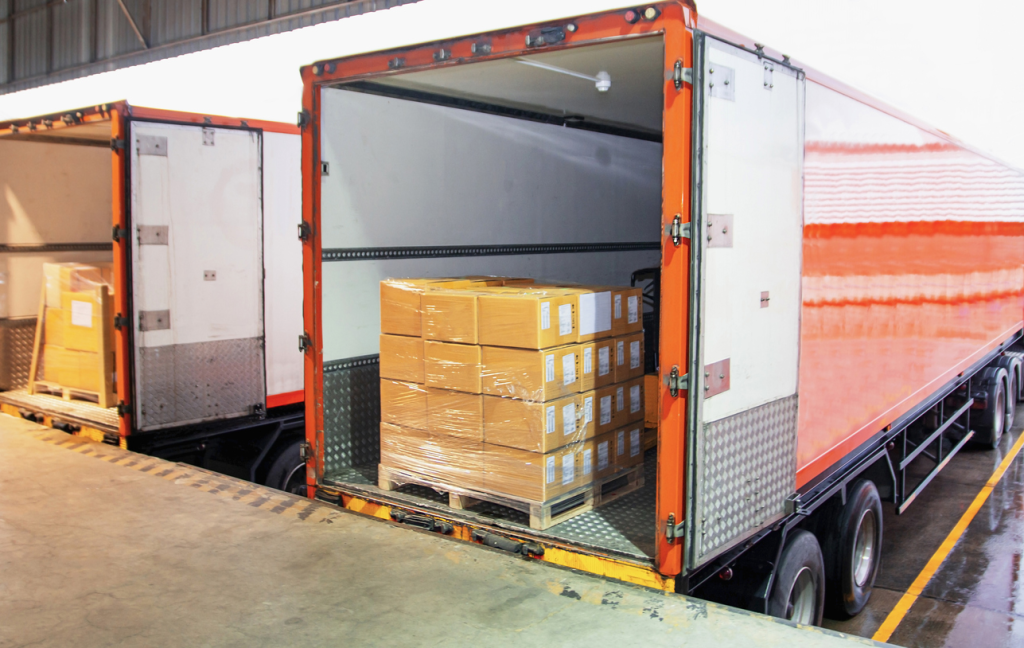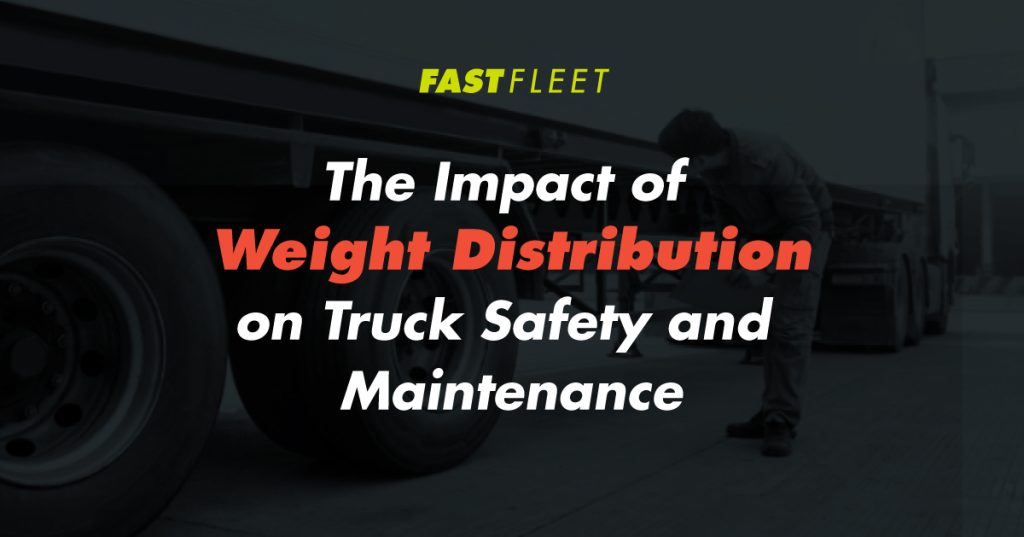
For fleet managers, ensuring that trucks are safe and reliable on the road is a top priority.
One often-overlooked aspect of fleet safety and maintenance is weight distribution.
How a truck’s load is distributed can have a significant impact on vehicle handling, tire wear, fuel efficiency, and overall safety.
Properly balanced loads not only protect your trucks from unnecessary strain but also reduce the risk of accidents.
This guide will delve into the importance of weight distribution, the potential risks of improper load balancing, and how to ensure your fleet is optimized for safety and longevity.
The Importance of Proper Weight Distribution

Proper weight distribution involves evenly spreading the load across a truck’s axles to ensure stability and control.
When weight is distributed correctly, it enhances the vehicle’s handling and braking performance, reduces tire wear, and minimizes stress on the suspension system.
Here’s why weight distribution is crucial:
1. Enhanced Vehicle Stability
Evenly distributed weight ensures that all tires maintain proper contact with the road surface, providing better traction and stability. This is particularly important in adverse weather conditions or when navigating sharp turns. Proper weight distribution helps prevent the truck from tipping or rolling over, which can lead to serious accidents.
2. Improved Braking Performance
When weight is evenly distributed, the braking force is applied more evenly across all tires, reducing the risk of skidding or loss of control. Overloaded or poorly balanced trucks can experience longer stopping distances, which increases the risk of collisions. Proper weight distribution ensures that the truck can brake effectively, even under heavy loads.
3. Reduced Tire Wear
Uneven weight distribution places excessive strain on certain tires, leading to uneven tire wear.
This not only shortens the lifespan of the tires but also increases the risk of blowouts. Proper load balancing ensures that all tires share the load equally, resulting in more uniform wear and extending tire life.
4. Lowered Maintenance Costs
Incorrect weight distribution can lead to increased wear and tear on various truck components, including the suspension system, axles, and brakes.
Over time, this can result in higher maintenance costs and more frequent repairs. By ensuring proper weight distribution, you can reduce the strain on these components, lowering your overall maintenance expenses.
Risks of Improper Weight Distribution

Failing to properly balance the load in your trucks can have serious consequences. Here are some of the risks associated with improper weight distribution:
1. Increased Risk of Accidents
Improperly balanced loads can cause trucks to become unstable, especially during turns, sudden stops, or in high winds. This instability can lead to rollovers, jackknifing, or loss of control, putting both the driver and other road users at risk.
2. Accelerated Wear and Tear
When weight is not evenly distributed, certain parts of the truck, such as the suspension system, tires, and axles, are subjected to additional stress. This accelerates wear and tear, leading to more frequent breakdowns and costly repairs.
3. Reduced Fuel Efficiency
An unevenly loaded truck requires more energy to maintain stability and control, which can lead to increased fuel consumption. Proper weight distribution helps the truck operate more efficiently, reducing fuel costs over time.
4. Legal and Compliance Issues
Overloading or improperly loading a truck can lead to legal issues, including fines and penalties. Many jurisdictions have strict regulations regarding weight distribution and axle loads. Non-compliance can result in costly fines and damage to your company’s reputation.
Tips for Achieving Proper Weight Distribution

To ensure your truck fleet is properly balanced and road-ready, consider the following tips:
1. Know Your Vehicle’s Load Capacity
Understanding your truck’s gross vehicle weight rating (GVWR) and axle load limits is essential for proper weight distribution. Never exceed these limits, and ensure that the load is evenly distributed across all axles.
2. Position Heavy Items Correctly
Place the heaviest items as close to the center of the truck’s bed as possible, and distribute them evenly from side to side. This helps maintain a low center of gravity and reduces the risk of tipping or rolling over.
3. Use Load Securing Equipment
Properly securing the load with straps, chains, and other securing devices prevents it from shifting during transit. Shifting loads can lead to sudden changes in weight distribution, which can destabilize the truck.
4. Regularly Inspect Load Distribution
Make load inspections a part of your pre-trip routine. Ensure that the load is evenly distributed and properly secured before hitting the road. If necessary, adjust the load to achieve better balance.
5. Train Your Drivers
Ensure that your drivers are trained in proper loading techniques and understand the importance of weight distribution. They should know how to inspect the load and make adjustments if needed.
6. Utilize Technology
Consider using onboard weighing systems or load monitoring technology to continuously monitor weight distribution while on the road. These systems can alert drivers to any imbalances, allowing them to take corrective action.
Proper weight distribution is a crucial aspect of truck safety and maintenance that should never be overlooked.
By ensuring that your loads are balanced and within legal limits, you can enhance vehicle stability, improve braking performance, reduce tire wear, and lower maintenance costs.
Prioritizing weight distribution in your fleet operations not only protects your trucks but also ensures the safety of your drivers and other road users.
Ensure your truck fleet is always road-ready with professional maintenance services that prioritize safety and efficiency.
Work with Fast Fleet for expert load balancing, regular inspections, and comprehensive maintenance solutions.
Contact us today to learn more about how we can support your fleet’s needs and keep your vehicles running smoothly.
















